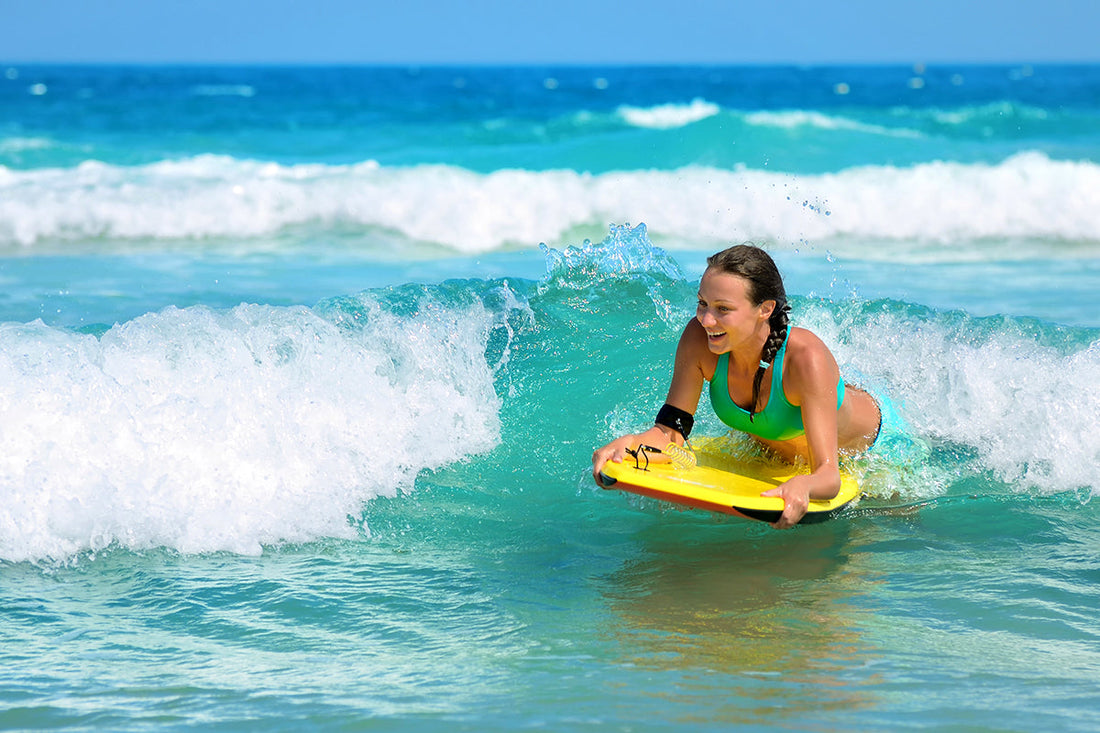
How to Keep Kids Safe in the Water: Essential Tips Every Parent Should Know
Share
Water activities are one of the most fun and engaging ways for kids to spend time outdoors. Whether it's a trip to the beach, a day at the pool, or an exciting family surfing adventure, being in the water provides children with opportunities to learn, explore, and create lasting memories. However, it's also important to remember that water safety is a top priority, especially for young kids. As parents, ensuring your child's safety in and around the water is essential.
In this blog, we'll walk you through the most important tips to keep kids safe in the water—whether they’re just starting to swim or are seasoned water lovers.
1. Supervision is Key
The most important tip for keeping kids safe in the water is simple: always supervise them. Even if your child is a confident swimmer, it’s essential to remain within arm’s reach. Accidents can happen quickly, so vigilance is crucial.
- Stay within arm’s reach: If your child is in the water, you should be there too—whether you’re standing beside the pool, on the shore, or right in the water with them.
- Avoid distractions: When your child is in or near the water, avoid distractions like your phone, reading, or chatting with others. Focus on your child and keep a watchful eye on them at all times.
- Set boundaries: If your child is swimming at the beach or in a pool, set clear boundaries for where they can and cannot go. Make sure they understand the importance of staying in a designated, safe area.
2. Teach Kids to Swim
Teaching your child how to swim is one of the best ways to ensure their safety in the water. Knowing how to float, kick, and swim with confidence can help them handle themselves in a variety of water situations.
- Enroll in swim lessons: Many community centers, local pools, and swim schools offer swimming lessons for kids of all ages. These lessons teach essential water skills like floating, treading water, and basic strokes.
- Practice water safety skills: In addition to swimming techniques, teach your child basic water safety skills. This includes floating on their back, holding their breath, and getting to the edge of the pool or the shore if they’re feeling tired or overwhelmed.
- Start early: The earlier you introduce your child to the water, the more comfortable they will be in it. But remember, don’t rush it. Some children might take to the water right away, while others may need more time to build confidence.
3. Use Proper Safety Gear
Whether you’re at the beach, in the pool, or out on a boat, the right safety gear can make a big difference in keeping your child safe. Here’s what you’ll need for different water activities:
- Life Jackets: Always use a properly fitting life jacket for your child when boating or engaging in water activities, even if they are good swimmers. A life jacket can keep them afloat if they get tired or caught in a current. Look for jackets that are USCG-approved and designed for children.
- Swim Floaties and Arm Bands: For younger or less experienced swimmers, swim floaties or arm bands can provide an added layer of safety. However, never rely solely on these—supervision is still necessary, and floaties should never be a substitute for a life jacket.
- Water Shoes: When heading to the beach, river, or rocky areas, water shoes are essential to protect little feet from sharp objects or slippery surfaces.
- Wetsuits: If your child is surfing, bodyboarding, or spending long periods in the water, a wetsuit will help keep them warm and buoyant, especially in cooler waters.
4. Know the Water Conditions
Before allowing your child to swim or surf, it’s important to check the water conditions and environment. Beaches and pools can have different hazards depending on weather, tides, or current conditions.
- Check the weather and tides: At the beach, make sure to check the local weather forecast and tide charts before heading out. Strong winds, rip currents, and high waves can pose a significant risk to children. If the water looks too rough, it’s best to wait for calmer conditions.
- Check pool conditions: At pools, check for clear water and that the pool is properly maintained. Poorly maintained pools with high bacteria levels can cause illness, so always make sure the water is clean and clear.
- Understand rip currents: If you’re at the beach, make sure you’re familiar with how to recognize and escape rip currents. Teach your child not to fight the current and to swim parallel to the shore until they escape it.
5. Set Pool and Beach Rules
Setting clear rules and expectations for your child is a great way to teach them how to stay safe around water.
- No running near the pool: Wet surfaces can be slippery, so make sure your child understands the importance of walking instead of running near the pool or along the beach.
- Buddy system: Always make sure your child is swimming with a buddy. The buddy system encourages children to stay close to each other and look out for one another while swimming.
- Stay within safe zones: If you’re at the beach, set clear boundaries for how far they can go into the water. Make sure they understand the importance of staying within the designated safe zones where lifeguards are present.
- No swimming alone: This is an essential rule—never allow your child to swim or play in the water alone. Even strong swimmers need supervision, and accidents can happen quickly.
6. Teach Water Safety Signals
It’s important that your child knows some basic water safety signals in case they get in trouble. Make sure to go over these with them, and practice regularly.
- Waving hand or splashing: Teach your child to wave their hand or splash if they are in distress. This is a signal that they need help.
- Floating and treading water: Practice with your child how to float on their back and how to tread water if they get tired. This can help them stay calm and afloat while waiting for assistance if needed.
- Help with entry and exit: Teach your child how to safely enter and exit the water, whether it’s from a pool, the beach, or a boat. Knowing how to safely get in and out of the water can reduce the risk of slipping or falling.
7. Watch for Signs of Fatigue or Discomfort
Sometimes, even experienced swimmers get tired or overwhelmed by the water. Always be on the lookout for signs of fatigue or distress, such as:
- Exhaustion: If your child seems tired, take a break from swimming or playing in the water and rest on the beach or poolside.
- Shivering: Shivering can be a sign that your child is cold. If they start to shiver, it’s time to get out of the water and warm up with a towel or blanket.
- Clinginess or fear: If your child is acting clingy, afraid, or uncomfortable in the water, don’t force them to continue. It’s important to respect their feelings and build their confidence gradually.
8. Know What to Do in an Emergency
Accidents can happen, so it’s crucial that you know how to respond if something goes wrong.
- Learn CPR: Enroll in a CPR course for parents and caregivers. Knowing how to perform CPR on a child can make all the difference in an emergency situation.
- Call for help: If there’s an emergency, don’t hesitate to call for professional help immediately. Lifeguards and emergency services are trained to handle water-related emergencies.
Final Thoughts
Keeping kids safe in the water requires vigilance, preparation, and education. By following these essential water safety tips, you can help ensure that your child has fun while staying safe. Water activities are a great way to bond with your little ones and introduce them to new experiences, and with the right precautions in place, everyone can enjoy the water with confidence.
At [Your Shop Name], we provide a variety of water safety gear for kids, from life jackets to wetsuits and swim accessories. Shop with us to get the best gear for your family’s water adventures!
🌊👶💦
